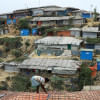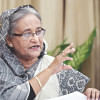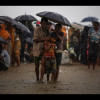Respond to the plight of Rohingyas: HRW to S Asian leaders

Southeast Asian leaders at their annual summit should drastically rethink their response to the plight of Myanmar's ethnic Rohingya, Human Rights Watch said today.
The 10 leaders of the Association of Southeast Asian Nations (ASEAN) are scheduled to meet at the 34th ASEAN Summit in Bangkok, Thailand from June 20-23, 2019.
During its 2018 summit, ASEAN addressed the Rohingya crisis but focused largely on repatriation issues, treating the "humanitarian situation" in Myanmar's Rakhine State merely as "a matter of concern" and disregarding the government's crimes against humanity.
For this week's summit, ASEAN's Emergency Response and Action Team (ERAT) produced a "preliminary needs assessment" on repatriation for the approximately one million Rohingya refugees now in Bangladesh.
The 56-page report, obtained by Human Rights Watch, was developed without input from Rohingya refugees and almost entirely disregards the Myanmar government's atrocities that led to mass displacement. It does not even use the term "Rohingya," denying the group's self-identity.
"ASEAN seems intent on discussing the future of the Rohingya without condemning – or even acknowledging – the Myanmar military's ethnic cleansing campaign against them," said Brad Adams, Asia director.
"It's preposterous for ASEAN leaders to be discussing the repatriation of a traumatized population into the hands of the security forces who killed, raped, and robbed them."
Myanmar's government has repeatedly denied that its military was primarily responsible for the current refugee situation, ludicrously blaming Rohingya for the widespread destruction and displacement.
In its closing statement at the 2018 summit, ASEAN expressed "[t]he needs to find a comprehensive and durable solution to address the root causes of the conflict and to create a conducive environment so that the affected communities can rebuild their lives."
Yet ASEAN's ensuing focus on a repatriation process – as shown in the ERAT report – ignores the situation on the ground, sets unrealistic markers for assessing Myanmar's progress, and fails to identify the root causes of the crisis that need to be resolved before refugees can return in safety and dignity.

 For all latest news, follow The Daily Star's Google News channel.
For all latest news, follow The Daily Star's Google News channel. 







Comments